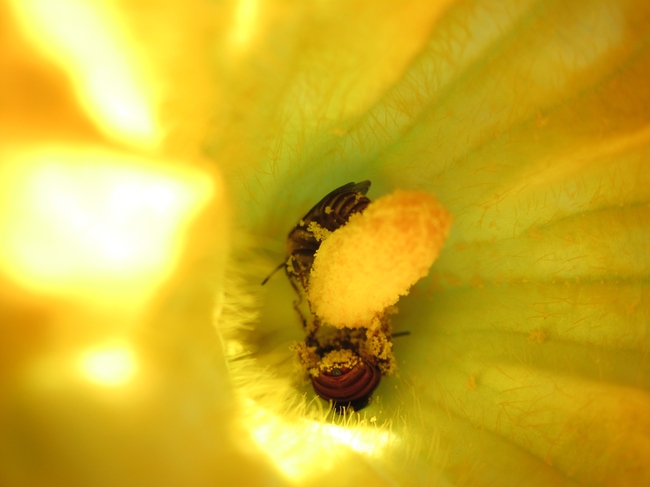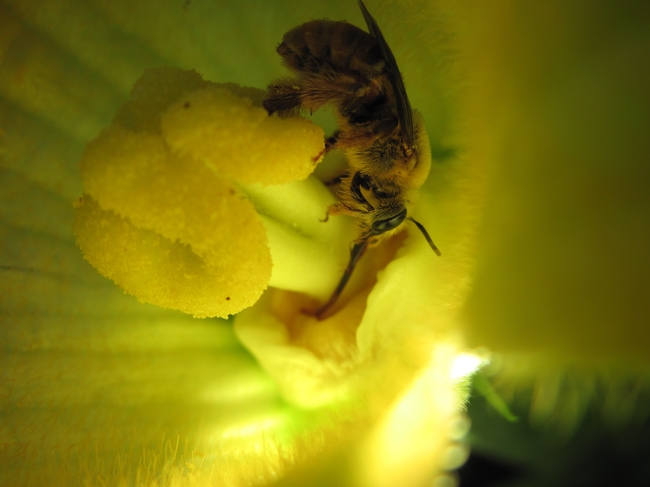With warm weather and mostly dry skies, some California farmers are prepping their fields for spring planting. On many fields used to grow squash and pumpkins, native squash bees (Peponapis pruinosa), valuable pollinators for squash growers, are nesting in the soil, waiting for spring emergence. With over ten thousand acres of squash and pumpkins grown in California in 2011, the success of pollination covers a lot of ground.

For native bee researcher Katharina Ullmann, understanding how these bees will be impacted by the upcoming tillage and other farming practices are big questions that can help farmers make decisions that protect native bee populations in their fields and maximize the benefit farmers see from pollinators. Ullmann was recently awarded a grant from Western SARE (Sustainable Agriculture Research and Education) and the National Science Foundation to fund her doctoral research on how crop rotations and tillage practices affect native squash bee populations.

Native squash bees nest 5 to 20 inches deep in the soil, and plowing or disking often disturbs soil as much as 20 inches deep, potentially damaging bee nests. Conservation tillage and no-till practices are increasingly seen as ways to lower fuel use and on-farm emissions from nitrogen and carbon dioxide, as well as decrease water runoff. Protecting native bee populations could potentially be an additional co-benefit to these methods.
I think about native bees as an insurance policy and potentially a yield increaser,” says Ullmann. “Honey bees are important; they’re always going to be important. But it can be beneficial for growers to know if they have crop-pollinating native bees flying around if, for example, honey bee prices spike or if it’s hard for a grower to get the number of honey bee colonies he or she needs.” Too, with new studies highlighting the productivity of native bees (in some cases doubling fruit set compared to honey bees), there is growing incentive to protect nesting grounds.
The results of Ullmann’s tillage study, in coordination with a parallel study on the effect of crop rotation on bee populations, will be turned into a user-friendly web tool for farmers to assess which combination of in-field practices will likely be best for fostering bee populations. “In creating these models of tillage and crop rotation practices, we’re hoping to help farmers find the synergy between different farming practices that yield the greatest benefits,” says Ullmann.
“Not all farmers will change tillage or crop rotation practices just because of bees, but maybe this is another piece of information that farmers can use to make informed management decisions. “Ultimately,” says Ullmann, “my goal is to provide farmers with that opportunity.”
Looking for squash bees on your farm or in your garden? They look similar to honey bees but with fuzzier legs that lift dry pollen from squash blossoms, and male bees have a yellow spot on their face that resembles a nose. But perhaps the easiest way to identify them — gently squeeze a closed squash blossom and wait to hear a buzz. The bee inside is likely a native squash bee, resting up in preparation for more work.